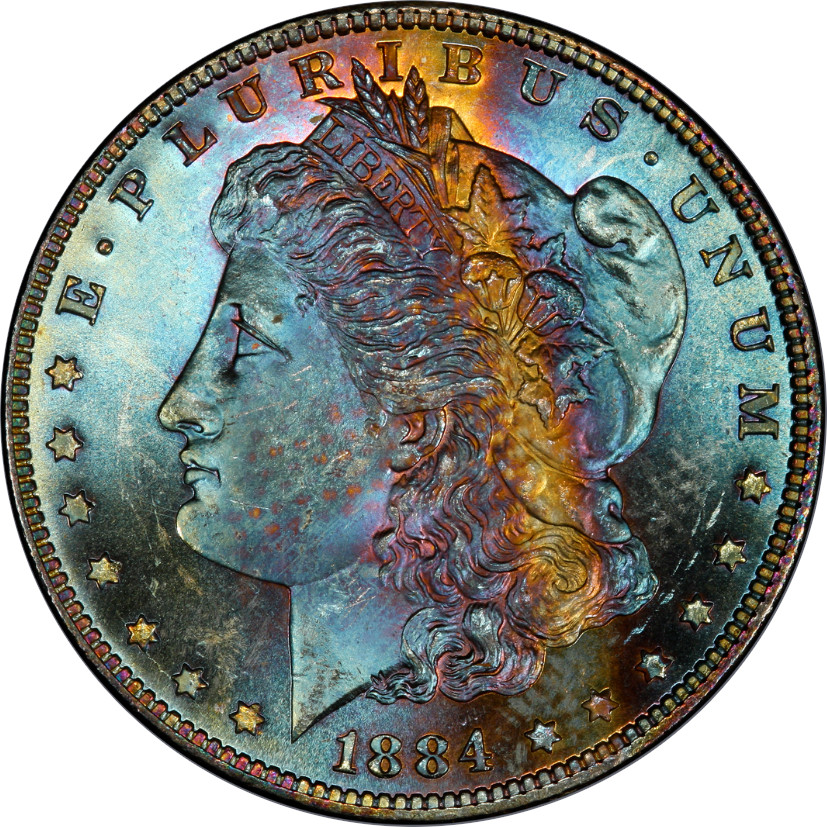
A quick aside about the general numismatic market: things are definitely improving. Between crypto and the stock market both getting shaky, it seems like, as of January 2019, the coin market is much healthier than it has been. Whether it continues this way or not is another discussion. Without further ado, back to your regularly scheduled programming:
This was a big one. We took some time to try to figure out the value of toning. It took a lot of work.
Unfortunately, there was not a satisfying exact correlation between the beauty of toning and the auction price of that coin. But, there were some interesting things that we were able to glean for you.
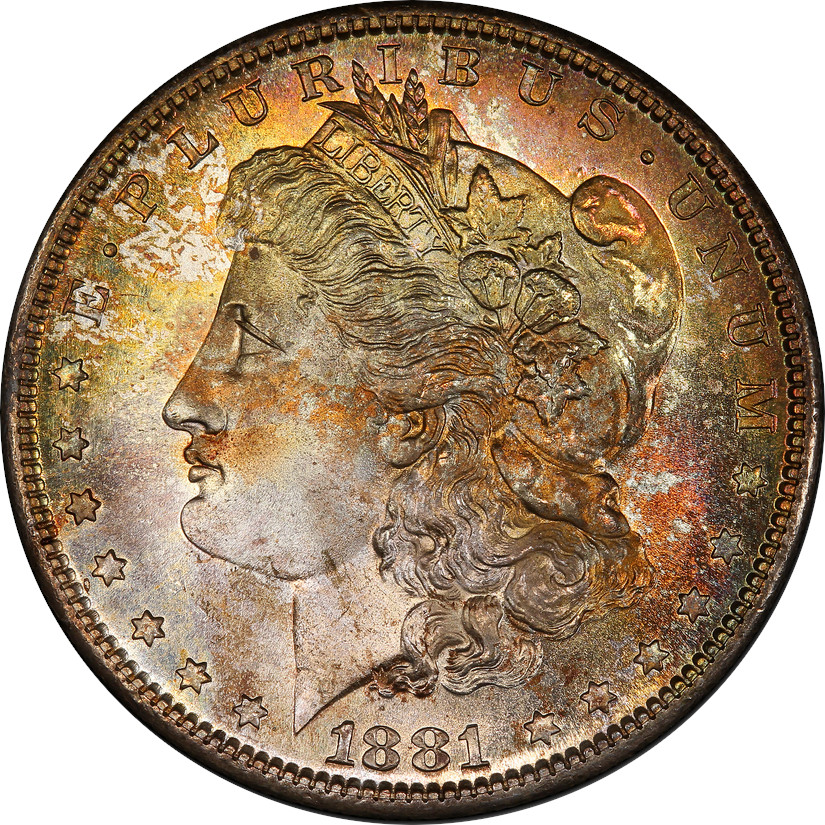
We looked at straight-graded Mint State 65 1881-S Morgan Dollars sold at all of the major auction houses for the past couple of years. We also looked at “+” coins, CAC coins, and “*” coins. Coins with special grading characteristics as described above typically did better than coins without, regardless of beauty of their toning. Just as you’d expect.
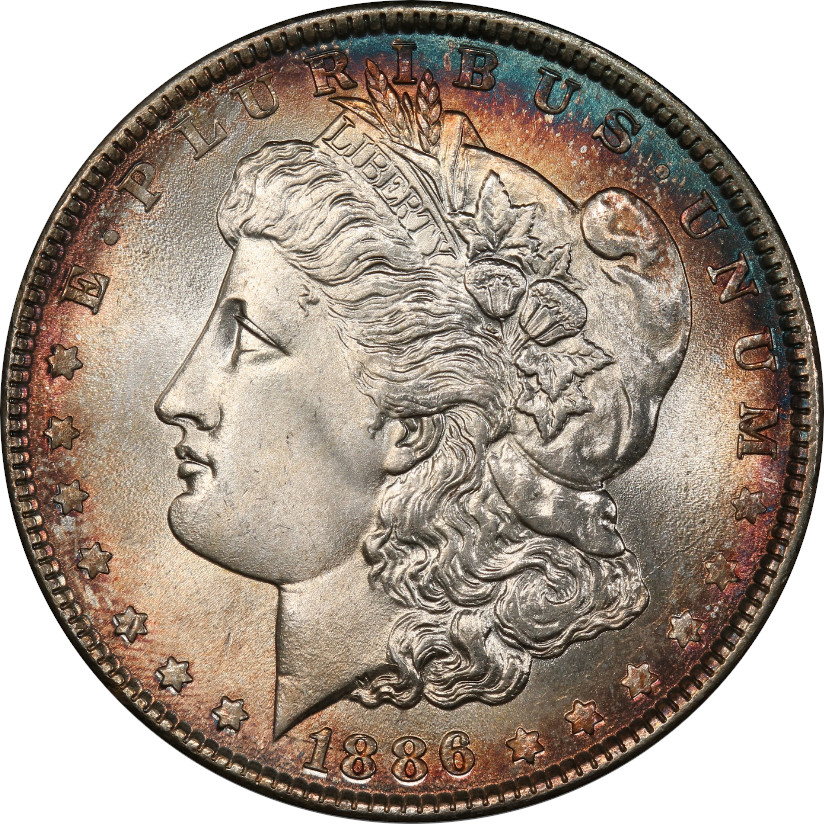
But there’s one major caveat in our study you need to understand before we progress. Appreciation of toning is a completely personal thing. I might rate one obverse at 2 out of 10 for beauty of toning, whereas my colleague here might rate it a 3. Or a 1. Or a 5.
But, we had to start somewhere. So we rated each side of each of many, many MS-65 ’81-S Morgans for the beauty of their coin toning on a scale of 1 to 10. We kept track of those scores, and also kept track of the average of the obverse and reverse scores to see what we could find.
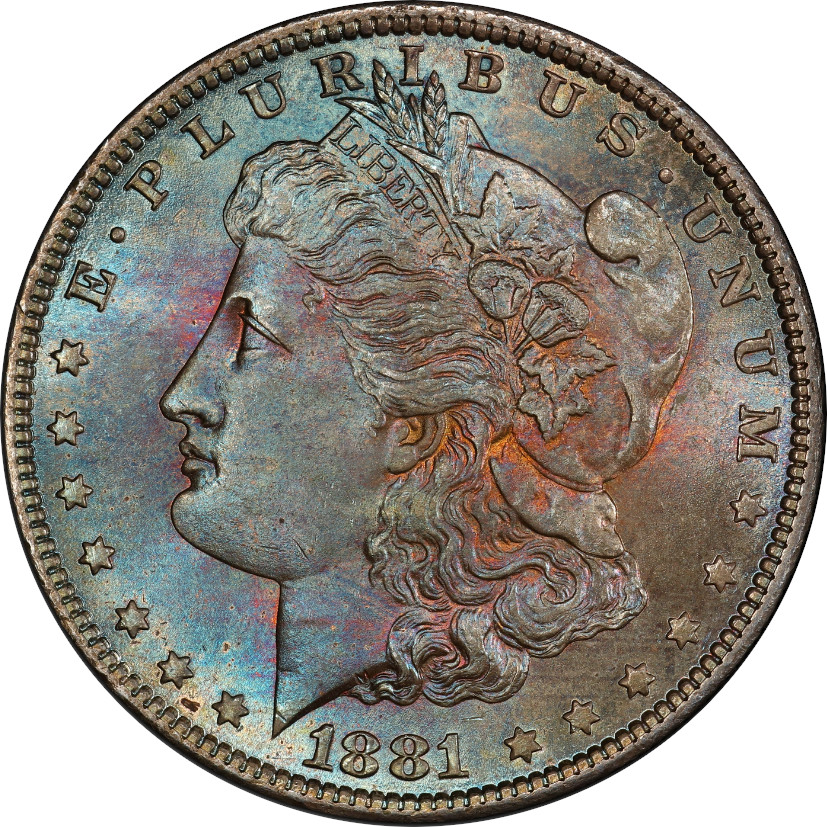
First, a coin’s spectacular obverse toning lead to the highest auction prices. No surprise here.
Spectacular reverse toning did not. That is a bit of a surprise.
Coins with excellent average toning scores got higher sales prices, but the obverse toning is definitely the driver.
Coins with spectacular obverse toning (coins we rated 8 or higher) received upwards of 1000% the price of coins with no toning (coins we rated 0 or 1/10). But there was not a lovely linear correlation down our scoring scale.
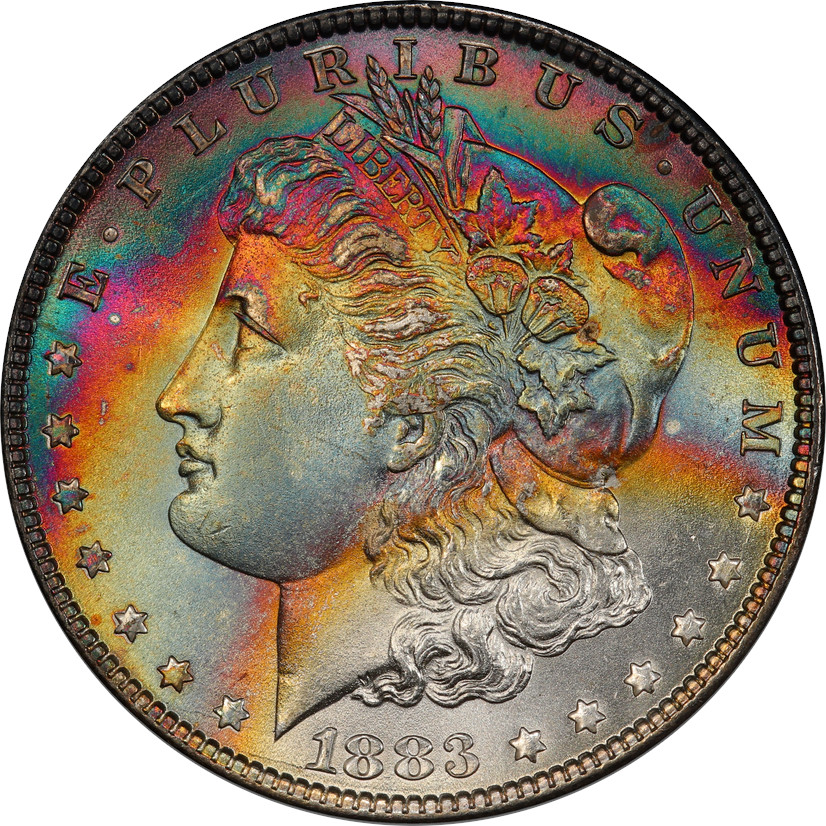
There was a large jump from coins selling for 800% of untoned coins down to 500%. Coins with obverse toning scores of 5 or greater typically brought between 200% and 400% of untoned coins. Coins with obverse toning scores of 1 to 4 typically brought between 100% and 200% that of untoned coins.
Somewhat surprising (to us), coins with average toning scores of 3 and higher brought anywhere from 100% to 1000% value. In other words, all over the scale. Most coins with an average score of 3 brought between 150% and 400% of coins with no toning, but again, no direct correlation between score and sale prices. The data is fuzzy.
More surprising to us, coins with high reverse toning scores bore no correlation whatsoever to value. Coins with only spectacular reverse toning brought prices throughout the entire spectrum. In fact, the coin with the most beautiful reverse toning only brought a price of under 200% that of a coin with no toning at all.
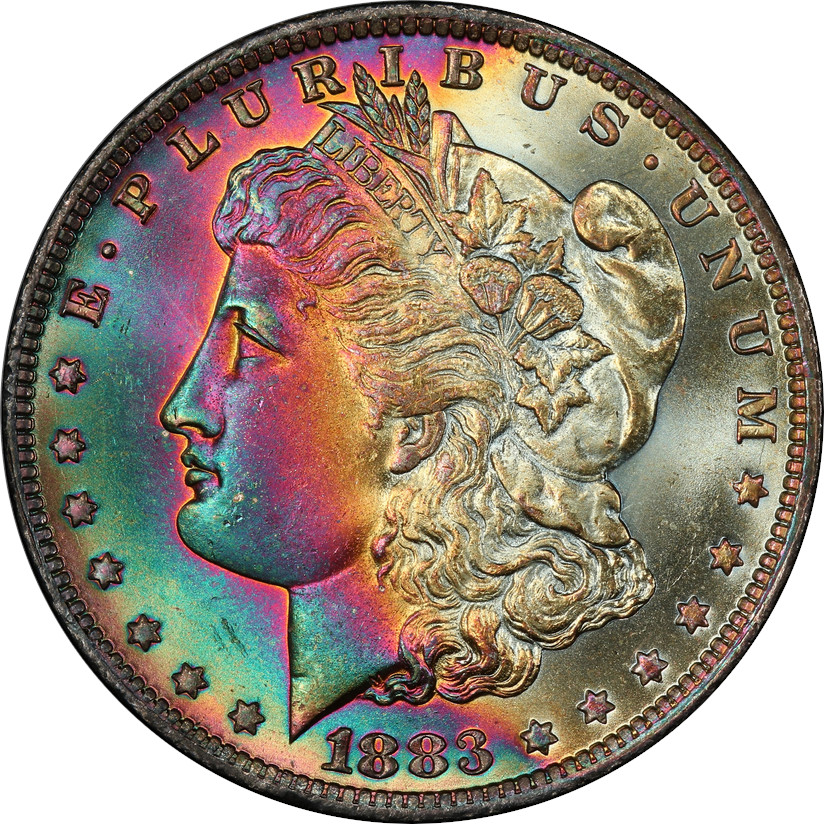
So what’s the takeaway from all of this? It’s actually very simple.
The price of toning is largely personal, and very difficult to assign a value or percentage premium to. You have to look at the overall eye appeal of the coin. If a collector is attempting to assemble a matched toning set, they will pay big prices for obverse toning to match their set. However, while beautifully toned coins bring a premium over untoned coins of the same grade, it is very difficult to assign a generic value to that eye appeal.

mariavisitacion P Lawas
Academy of Coins© Staff